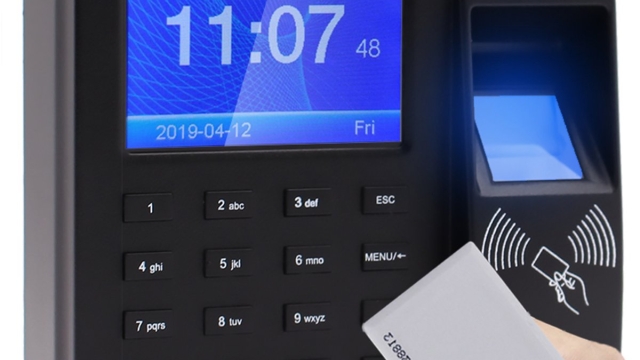Time to Punch In: The Evolution of Clocking In Machines
In today’s fast-paced world, the way we track time at the workplace has undergone significant changes. One of the most fascinating aspects of this transformation is the evolution of clocking in machines. From the simple mechanical devices of the early 20th century to the sophisticated digital systems we see now, these machines have revolutionized how we manage attendance and productivity.
In today’s fast-paced world, the way we track time at the workplace has undergone significant changes, particularly with the rise of Employee Time Tracking Software which reflects the evolution of clocking in machines from the simple mechanical devices of the early 20th century to sophisticated digital systems.
Clocking in machines have not only made the process of tracking time more efficient but have also played a crucial role in shaping workplace culture. As businesses grew and labor regulations became stricter, the need for accurate timekeeping grew as well. This led to innovations that reflect not just technological advancements, but also changing attitudes towards work and employee rights. The journey of clocking in machines offers a glimpse into the intersection of technology, efficiency, and the human experience in the workplace.
History of Timekeeping

Timekeeping has evolved significantly over the centuries, beginning with ancient civilizations that relied on the natural cycles of the sun and moon. Sundials and water clocks were among the earliest devices used to measure time, helping societies organize their daily activities and agricultural practices. These rudimentary methods laid the foundation for more sophisticated timekeeping techniques as cultures advanced.
The introduction of mechanical clocks in the Middle Ages marked a pivotal moment in timekeeping history. These clocks, powered by weights and gears, allowed for more precise measurements of time than ever before. As cities grew and the need for standardized timekeeping increased, mechanical clocks became fixtures in public spaces, guiding the rhythm of life in communities. This period saw a significant shift in how time was perceived and valued.
The industrial revolution further transformed timekeeping with the advent of mass production and the need for synchronization in factories. This era brought about innovations such as the pendulum clock and later, electric clocks, which greatly improved accuracy. As businesses expanded and workplaces required more structured schedules, the concept of clocking in and out emerged. This evolution set the stage for the development of specialized clocking in machines that would simplify and formalize employee time tracking.
The Rise of Punch Clocks
The rise of punch clocks in the late 19th century marked a significant shift in how businesses managed employee timekeeping. As industries expanded and the workforce grew, employers needed reliable systems to track hours worked. The punch clock, which allowed employees to stamp their time cards upon arrival and departure, provided a straightforward and efficient solution. This innovation not only streamlined payroll processes but also helped ensure accuracy in labor costs, a critical concern during the industrial boom.
As the technology evolved, mechanical punch clocks became more common in factories and offices. These machines typically operated on a simple lever mechanism, where employees would insert a time card into the device and press down on a lever to imprint the time. The tangible nature of the time card offered a clear record of attendance, satisfying both employers and employees. Regular use of punch clocks established a culture of punctuality and accountability in the workplace, further embedding this technology into the daily operations of businesses.
The popularity of punch clocks continued into the 20th century, eventually leading to advancements in design and functionality. With the introduction of electric punch clocks, businesses enjoyed even greater accuracy and ease of use. These devices eliminated the mechanical wear and tear of their predecessors and often featured automatic time stamping. As organizations became more data-driven, the need for precise time tracking pushed the evolution of clocking in machines beyond simple punch clocks, setting the stage for the modern systems we utilize today.
Advancements in Clocking In Technology
The evolution of clocking in machines has seen significant advancements that enhance employee attendance tracking and improve operational efficiency. Early mechanical time clocks, which merely stamped a time card, have transformed into sophisticated digital systems that seamlessly integrate with various workplace technologies. Modern clocking in machines now often feature biometric authentication, such as fingerprint or facial recognition, which not only speeds up the clocking in process but also reduces the likelihood of buddy punching where one employee clocks in for another.
In addition to biometric systems, the advent of mobile clocking in applications has revolutionized how employees can manage their time. With smartphones and tablets, workers can now clock in from various locations, making it easier for remote teams or those who work on-site throughout multiple locations. These applications often come equipped with geolocation features, ensuring that employees are clocking in from the correct sites while providing employers with accurate tracking data.
Furthermore, cloud-based clocking in systems have become increasingly popular. These systems allow for real-time data collection and reporting, enabling management to analyze attendance patterns and streamline payroll processes with ease. The efficiency of cloud technology not only reduces the administrative burden but also enhances the accessibility of data, making it simpler for both employees and employers to stay informed about attendance records.
Impact on Employee Management
The introduction of clocking in machines has significantly transformed the landscape of employee management. These devices streamline the process of tracking attendance, reducing administrative burdens associated with manual logging. With accurate real-time data on employee hours, managers can make more informed decisions regarding staffing and payroll, ensuring that labor resources are utilized effectively. This efficiency not only saves time but also enhances productivity within the workplace.
Furthermore, clocking in machines contribute to improved accountability among employees. When workers know that their arrival and departure times are being monitored closely, they are more likely to adhere to scheduled hours. This promotes a culture of punctuality and responsibility, fostering a work environment where deadlines are respected, and collaboration thrives. Over time, such a culture can lead to better overall performance and increased job satisfaction among team members.
Moreover, the data collected from clocking in machines can provide valuable insights into employee performance and engagement. Managers can analyze attendance patterns, identify trends, and address issues related to absenteeism or tardiness more proactively. This analytical approach enables organizations to implement targeted interventions to support their workforce, ultimately leading to a more motivated and dedicated team that aligns with the company’s goals.
Future Trends in Time Tracking
As technology continues to advance, the future of clocking in machines is expected to shift dramatically towards greater automation and connectivity. The integration of artificial intelligence and machine learning will likely enable these devices to analyze employee attendance patterns more efficiently. Companies may adopt smart clocking systems that utilize facial recognition or biometric data, providing seamless and secure methods for employees to check in and out. This transition not only improves accuracy but also enhances the overall user experience.
The rise of remote work has prompted a reevaluation of traditional clocking in methods. Future time tracking solutions may focus on virtual environments and flexible work schedules, allowing employees to clock in from anywhere. Mobile applications integrated with location services could provide convenient options for time management, ensuring that remote workers maintain accountability while having the flexibility needed for productivity. Companies may also implement cloud-based platforms for real-time monitoring and reporting, creating a holistic view of workforce engagement.
Sustainability is becoming a key consideration in all areas of business, and clocking in machines are no exception. Future trends may emphasize eco-friendly designs and materials, as organizations seek to reduce their environmental footprint. Furthermore, integrating time tracking systems with broader organizational tools could facilitate improved resource management and data-driven decision making. This evolution in time tracking not only reflects changing workplace dynamics but also aligns with the growing commitment to sustainability within modern enterprises.


